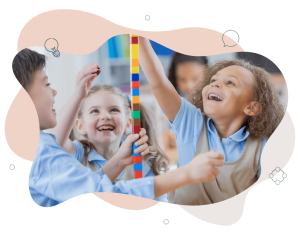28 Supporting student learning through observation
In the classroom observations are often used to document children’s learning. When students are involved in play, they engage with experiences, materials and equipment that interest them, which means that teachers can observe things about a student that they may not otherwise see. In the case studies below, you will find examples of how teachers use observations to support their planning and assessment of children’s abilities in order to plan the next extension.

Case study – voices from the field
In the ‘Differentiated/Play-based inquiry learning in the early years of schooling’ project teachers shared their observational methods to facilitate assessment. Overall, observation appeared to be the most utilised method for documenting student learning. The teachers tended to record students play by writing or videoing while the play was occurring for later reflection. As one teacher explained, she implemented a “dedicated” play-based session to take observations of the practical skills students use, such as problem solving, and the ability to build and extend concepts. Other teachers identified observations of student’s play as being a useful tool for assessing their capabilities to take turns, negotiate, persist, compromise, work in small or large groups and use oral language.
Read, look, or listen
There are many observational methods that can be used in the classroom. ‘How to get into play-based learning: Part 4 – Assessment in a playful classroom’ is a video that follows the practice of a primary school teacher Katie from Ontario Canada. Katie uses qualitative observations to plan alongside the children. While the guiding curriculum differs from those that you may use in your school, the video offers many good tips such as how to collect evidence of learning though observations, conversation and products. It discusses pedagogical documentation that makes the learning visible for both the teacher and the student.
Engage and extend
Watch the video (5:55) below. Note how Katie uses the ICE model to classify qualitative observations and to be able to cater for each student:
- Ideas – supporting students to state their ideas and knowledge
- Connection – seeing links /relationships between concepts
- Extensions – prompting students to think beyond the immediate thereby expanding their world view.

